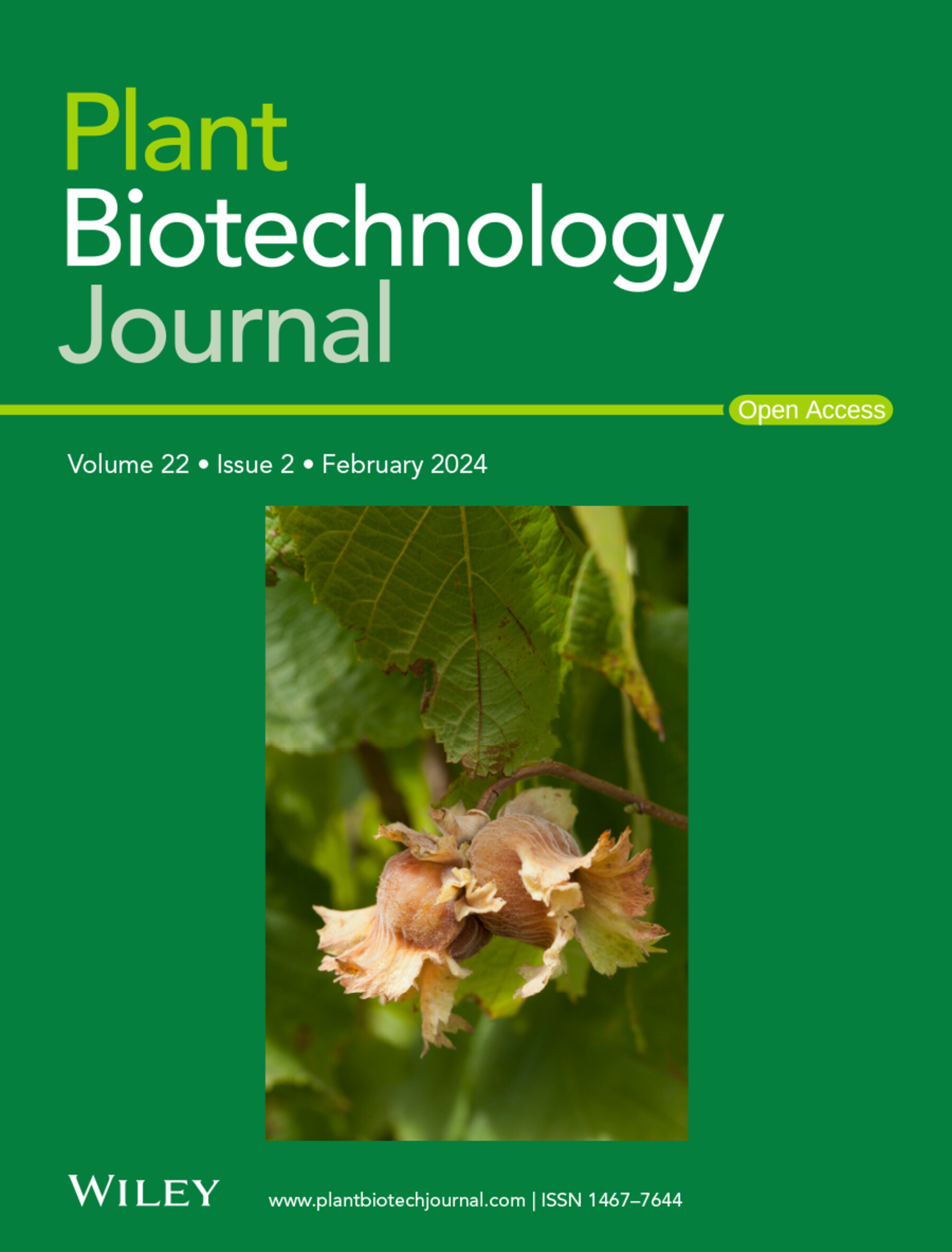Natural Variation in TaFAD8‐D Promoter Enhances Thermotolerance in Wheat Through Fatty Acid and Lipid Remodelling
IF 10.5
1区 生物学
Q1 BIOTECHNOLOGY & APPLIED MICROBIOLOGY
引用次数: 0
Abstract
Heat stress (HS) has become an increasing threat to wheat productivity under global warming. However, the genetic loci for thermotolerance and the underlying molecular mechanisms remain largely unknown. In this study, genetic mapping identified a thermotolerance locus,TaFAD8 - D启动子的自然变异通过脂肪酸和脂质重塑增强小麦的耐热性
在全球变暖的背景下,热胁迫对小麦生产的威胁日益严重。然而,耐热性的遗传位点和潜在的分子机制在很大程度上仍然未知。在这项研究中,遗传定位鉴定了一个耐热基因座QMpe.cau‐2D,编码脂肪酸去饱和酶8 (FAD8),在耐热品种的启动子区域存在转座元件(TE)插入。TaFAD8‐D的表达与耐热性呈负相关。TaFAD8的功能缺失突变提高了高温胁迫下的光合效率、幼苗成活率和千粒重。转录组、脂肪酸和脂质谱分析表明,TaFAD8突变影响脂质生物合成和代谢相关基因的表达,介导脂肪酸组成和脂质重塑,从而维持HS下叶绿体膜的流动性和完整性。TaWRKY71通过与TaFAD8启动子结合,负向调控TaFAD8的转录,TaWRKY71突变降低了HS下的光合效率。我们的研究发现了一个有益的TaFAD8 - D单倍型,揭示了其在热响应中的分子机制和调控途径,并为培育适应气候变化的小麦品种提供了策略。
本文章由计算机程序翻译,如有差异,请以英文原文为准。
求助全文
约1分钟内获得全文
求助全文
来源期刊

Plant Biotechnology Journal
生物-生物工程与应用微生物
CiteScore
20.50
自引率
2.90%
发文量
201
审稿时长
1 months
期刊介绍:
Plant Biotechnology Journal aspires to publish original research and insightful reviews of high impact, authored by prominent researchers in applied plant science. The journal places a special emphasis on molecular plant sciences and their practical applications through plant biotechnology. Our goal is to establish a platform for showcasing significant advances in the field, encompassing curiosity-driven studies with potential applications, strategic research in plant biotechnology, scientific analysis of crucial issues for the beneficial utilization of plant sciences, and assessments of the performance of plant biotechnology products in practical applications.
 求助内容:
求助内容: 应助结果提醒方式:
应助结果提醒方式:


